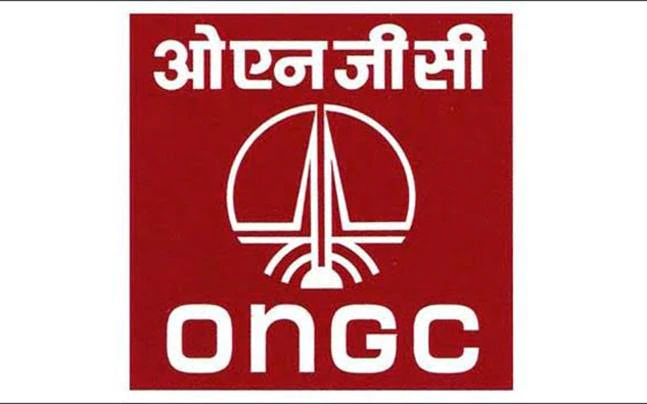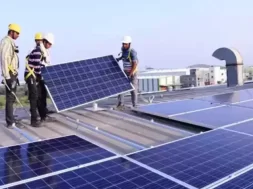
Introduction
PV Modules are important component of the PV plant capex. Modules constitute about 50-55% of the PV Plant capex depending on the technology chosen for building the solar plant. The module prices are dependent on following factors under normal circumstances:
- Poly-silicon price which, in turn, is dependent on supply-demand.
- Supply-demand of solar PV modules in the global market.
- Price of module’s Bill of Materials (BoMs), such as high transmissivity glass of 3.2 mm and 2 mm thickness, Ethyl Vinyl Acetate (EVA), Back-sheet or 2 mm rear glass sheet, Aluminium frame, Silver paste, Copper, Sea Freight, etc.
Module prices have shown a reducing price trend over last two decades. Normally, module price follows Swanson’s Law, which states that for every doubling of module capacity module price drops by 22%. Besides, the economies of scale other factors which dynamically change and influence the module price are the technological changes such as height and weight of ingot (Boules), number of ingots per crucible, effective length utilization of ingot, wafer thickness, kerf loss, cell efficiency, finger thickness and no. of busbars and so on. On top of that there are unknown extrinsic factors, such as factory shut-downs due to either accidents or natural calamities, wars, epidemics, maintenance, etc. In short, the price of modules at best can be reasonably estimated subject to these factors not swinging to extremes.
Profitability of solar projects is intimately linked to accurate prediction of module price. This problem is further exacerbated because of the time lag of 12-18 months between bidding and actual module purchase. More than 80% of the modules were earlier imported from China and, as a matter of fact, for solar industry China was and continues to remain so even now, the workshop of the world. Thus, the demand side of the supply chain has always been beset by uncertainty as the market pull is dependent on the governments policies across the globe. Historically, module prices have steadily dropped but there have been years in which prices have hardened instead of softening. However, those years are few and far in between. On all such occasions it has been either caused by the disruption of supply-chain or unusual market pull from a particular geography. The most recent occurrence was in 2021, following Covid 19 where all factors came together to create a singularity and caught many developers by surprise. It so happened that during Covid the module prices tanked and assuming it to be normal many developers considered further price drop in next 12 months for bids which came back to bite them later. Because of Covid many expansions plans were shelved and post Covid when the market recovered, there was an acute shortage of polysilicon. The Polysilicon prices rose from 11 $/kg to 30-35 $/kg. During this period Poly-silicon manufacturers had a gross profit of 50-55%, whereas the modules OEMs’ gross profit was 12-14%. In CY2021 India installed 10.5 GW in total and in CY2022 it rose to 13.5 GW. It may be noted that in CY2024-Q1 alone India installed 10.05 GW. This shows the price elasticity of demand in this sector. Needless to say, due to excess polysilicon capacity now the supply is far more than demand and hence the module prices are all time low in 2024.
Current Module Price Forecast Practice
There are many consulting groups which have publications projecting prices for 1-3 years and sometimes 5 years. These groups also publish weekly price trends and sometimes quarterly as well. Their analysis and forecast are based on telephonic interviews and market intelligence. They have a system of getting industry trend by interviewing industry experts across a wide cross section involving customers and OEMs in all categories on sampling basis. Some are as old as 2009 and others are as new as 2023. They provide price data for entire value chain, namely, polysilicon, wafer, cells, and modules of different formats. Some provide prices specific to geographies as well. There are a few publications which give outlook of Module BoM as well. Many developers subscribe to one or more such data bases and combine it with their own market intelligence to decide future price while bidding. In a normal situation such estimates do not have a wide variance from the actual price, however, any disruption in supply chain creates an uncertainty. Different components of supply chain have different gestation period for capacity augmentation, e.g. longest being for polysilicon and shortest for modules. In an unstable equilibrium when the supply is short of demand and action is taken to bring new capacity online there is a time lag during which prices remain firm. Since many companies increase their capacity simultaneously in response to market it creates a glut in the market and prices come crashing down. Thus, any disturbance in the supply chain leads to boom-and-bust cycles before equilibrium is restored. Currently, the nameplate capacity for 2024 for all components is around 1000 GW plus, whereas projected demand for the year is approximately 500 GW. It is beside the point that it is not easy to predict market’s reaction to the falling prices because of price elasticity of demand. A snapshot of capacity build of crystalline silicon supply chain is given in table 1.
Table 1: Change in price of supply chain components with varying ratio of demand-supply
All the values are for the mono-facial PERC modules and barring 2020 for rest of the years it is for M10 wafer size i.e., 182×182 mm2. This table creates an impression that at no stage the demand was more than the supply capacity. However, it may be noted that the capacity mentioned for a year is the closing name plate capacity of the year. It does not shed light on the capacity ramp up. New capacities not only have ramp up time but also take time for stabilizing the production. Also, the other convoluted information which is not captured is the impact of technology development and optimization during the year, such as reduced wafer thickness, improved yield and cell efficiency over time. In order to estimate the gap between supply-demand, each component of the supply chain needs to be tracked on monthly basis and also factor in noise factors such as accidents, plant maintenance, natural disasters, closures due to workers strike and so on.
Accuracy of Present Prediction Methodology
To understand the accuracy of price predictions made by different data bases, one of the predictions for 3 years was randomly selected and the predicted quarterly values were compared with the actual price for 2 years by compiling weekly data over 2 years from 3 different data bases. This exercise was done for various cell and module form factors. However, for simplicity only the results of most common form factor i.e., M10 Mono-facial wafers, cells and modules is presented. These data bases invariably publish prices in 3 buckets, namely, low, average, and high. For the sake of simplicity only average price data were compared. For some components price is given in RMB and the prices were converted to USD using the prevailing exchange rate. All the price comparisons are on FOB basis and hence any change in freight is not reflected in the analysis. In one of the exercises, the Dec 2021 price forecast of various components for next 3 years was compared with actual prices from Jan 2022 to May 2024. This was to understand the gap between predicted and actual price over longer term of 24 months. Realising the uncertainty and volatility prevailing in the market during 2020-2022, in a separate exercise the datum was shifted by an year and comparison of predictions made in 2022 Dec for next 12 months with actual data was done. Fig.1 shows the comparison of predicted and actual prices for Poly-Si, Wafer, Cell and Module for 8 quarters.

Fig.1 Comparison of price prediction of supply chain components in Dec 2021 with actual prices in next 8 quarters
It is evident that the predicted prices are either higher or lower than the actual prices. The closest comparison is between predicted and actual price of modules for the first 4 quarters. The dispersion in price data among three data bases is also maximum for the modules and least for wafer and cell. Despite the predicted polysilicon prices being lower than the actual poly-Si prices, the matching of module prices shows that there is a lag or the downstream manufacturers are able to absorb the price upstream price hike to remain relevant in the market.
Fig 2 compares the price prediction made in Dec 2022 for various components for CY2023. The purpose was to see the quality of prediction when many factors, such as glass, silver, freight, copper, etc have reset to their normal price range. This exercise too was carried out for M10 format alone. However, when a similar exercise was done for other size formats the outcome was not very different.

Fig.2 Comparison of price prediction of supply chain components in Dec 2022 with actual prices in next 12 months
It is evident that the predicted prices in Dec 2022 for CY2023 are very different than Dec 2021 prices predicted for 2023. However, inspite of the short-term prediction the convergence of predicted and actual prices in a narrow range is for first 4-5 months. In the outer months the price divergence is very significant. This goes on to prove that long-term price prediction is fraught with uncertainties particulary in situations where supply chain is disrrupted because of singularities.
To understand the interdependence of poly-silicon and module price average, a correlation curve between average poly-silicon price and average module price for 5 years, namely, Jan 2020 to May 2024. A cell efficiency of 23.1% and corresponding wattage of 7.63 Wp was considered for M10 Monofacial PERC cells. 62% material utilization from ingot to wafer was considered for calculating polysilicon g/Wp. The correlation curve is shown in fig.3.

Fig. 3 Correlation between Module Price and Polysilicon Price
There is a good correlation between Module price and Poly-Silicon price with 80% goodness of fit. The 20% variance may be because of variation in other cell and module price variances, such as chemicals, silver and aluminum pastes, glass, copper, aluminum and EVA.
Summary
It is shown that long-term forecast of module price is challenging as it is dependent on several factors of which some are less complex to quantify but others belong to VUCA (Volatile, Uncertain, Complex and Ambiguous) domain. To address these complex factors, one must have a finger on the pulse of the industry which is often termed as gut feeling. By nature, VUCA is different than risk as the former is not quantifiable, but latter can be quantified. For illustration the first level of module price breakup is given in fig.4. However, each of these bars can be further broken into its sub-components and prices assigned.

Fig.4: Module price break-up into its basic components for illustration only
The question remains whether it is possible to predict module price more accurately than what is today. Barring the stress cases like war and epidemic it can be reasonably accurately modelled. In the days of Artificial Intelligence (AI) it is not a tall ask. At a slightly watered down version of it could be the Monte Carlo Simulation, where each cost component is estimated in a range and using a probability distribution function, one can estimate module price, but each price point will be attached with a certain probability. In this regard, it is pertinent that corresponding to the spread in module price, the calculated Equity Internal Rate of Return (EIRR) too will have a spread and one will have a better appreciation of risk adjusted EIRR.
About Author

Amitabh Verma has been associated with Renewable Industry since 2006 and, has varied experience. After having superannuated from Aditya Birla Renewables in 2022 as CEO and CTO, he worked as Advisor to Aditya Birla Renewables business for 2 years.















